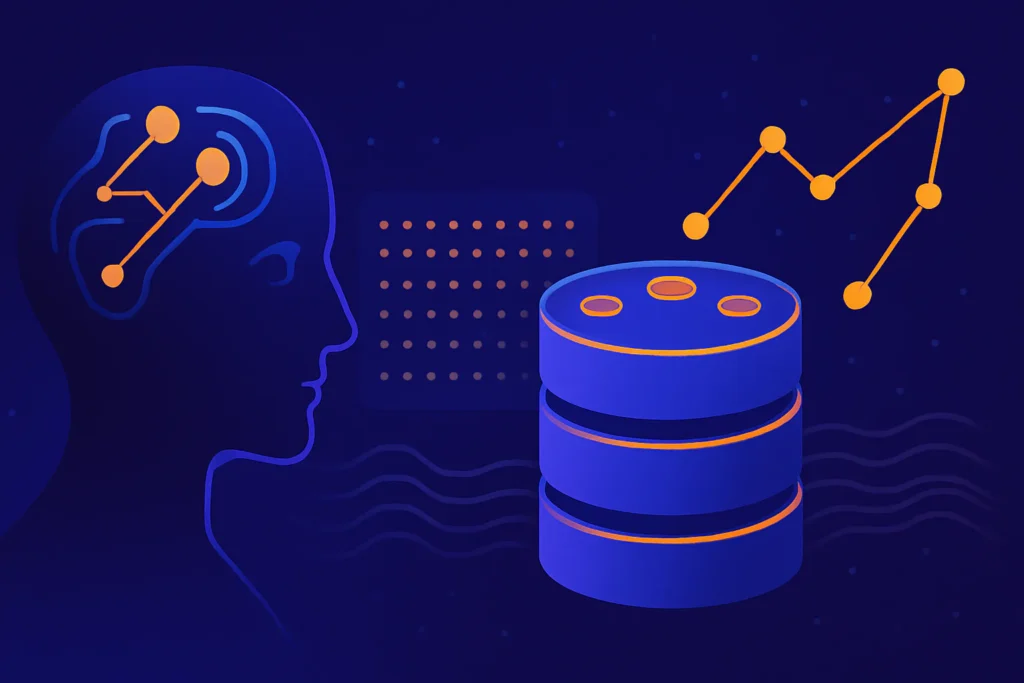

Vector Databases: The New Infrastructure for Generative AI Applications
The rapid evolution of language models and generative AI has created a specific technical demand: efficiently storing, indexing, and retrieving high-dimensional vectors at scale.
In this article, we’ll explore how vector databases have become a core component of modern AI architectures—especially with the rise of techniques like RAG (Retrieval-Augmented Generation).
What Are Vector Databases?
Unlike traditional databases—relational or document-based—that rely on exact value matching, vector databases work with high-level semantic numeric representations.
These vectors, typically generated by machine learning models, encapsulate the meaning of content such as:
- Text (phrases, documents, questions)
- Images and videos
- Audio, biometrics, and sensor data
- Source code and logs
The primary function of a vector database is to enable similarity search. Instead of looking for “exactly like X”, the query becomes “similar to X”.

Why Vector Databases Matter for Generative AI
With the emergence of RAG, LLMs now consult external knowledge sources before generating responses. These sources are almost always organized in vector databases.
In practice, vector databases serve as semantic knowledge repositories for enterprises, enabling:
- Reduced hallucinations in LLMs
- More personalized and contextual responses
- Seamless integration of private data with public models
- Increased accuracy and reliability
Growing Ecosystem and Key Players
The vector database market is expanding and consolidating rapidly. Notable trends include:
Relational and NoSQL Databases with Vector Support:
- PostgreSQL with the
pgvectorextension - MongoDB with native vector search and similarity indexing
- Oracle with integrated vector support
Specialized Vector Solutions:
- Pinecone, Weaviate, Qdrant – high-performance SaaS vector databases
- Milvus – open-source engine focused on clustering and distributed search
Simplified Integrations:
- Frameworks like LangChain and LlamaIndex abstract the complexity of connecting LLMs to vector databases
- Observability tools are beginning to support vector metrics and embedding traceability

Technical Implications for DBAs and DataOps
Scaling with vectors introduces operational challenges in database management:
Indexing:
- Choosing and tuning indexes like HNSW (Hierarchical Navigable Small World), IVF, and PQ
- Balancing query speed vs. precision
Vector Lifecycle Management:
- Frequent updates require versioning and discard strategies
- Efficient storage for outdated or unused embeddings
Governance and Compliance:
- Vectors derived from sensitive data must comply with security policies
- Audit trails needed for vector usage in AI models
Legacy Integration:
- Connectors and pipelines for transforming relational data into embeddings
- Synchronization between traditional transactions and their vector representations
Final Considerations
The rise of vector databases marks a structural shift in how we store and access digital knowledge. By enabling large-scale semantic search, they provide the infrastructure for truly intelligent AI systems—capable of understanding context and retrieving relevant information proactively.
For organizations with large datasets, the question is no longer if vectors will be adopted—it’s how to architect their use effectively.
Visit our YouTube channel to learn about the platform and watch tutorials.
Schedule a demo here.
Learn more about Flightdeck!
Learn about database monitoring with advanced tools here.


